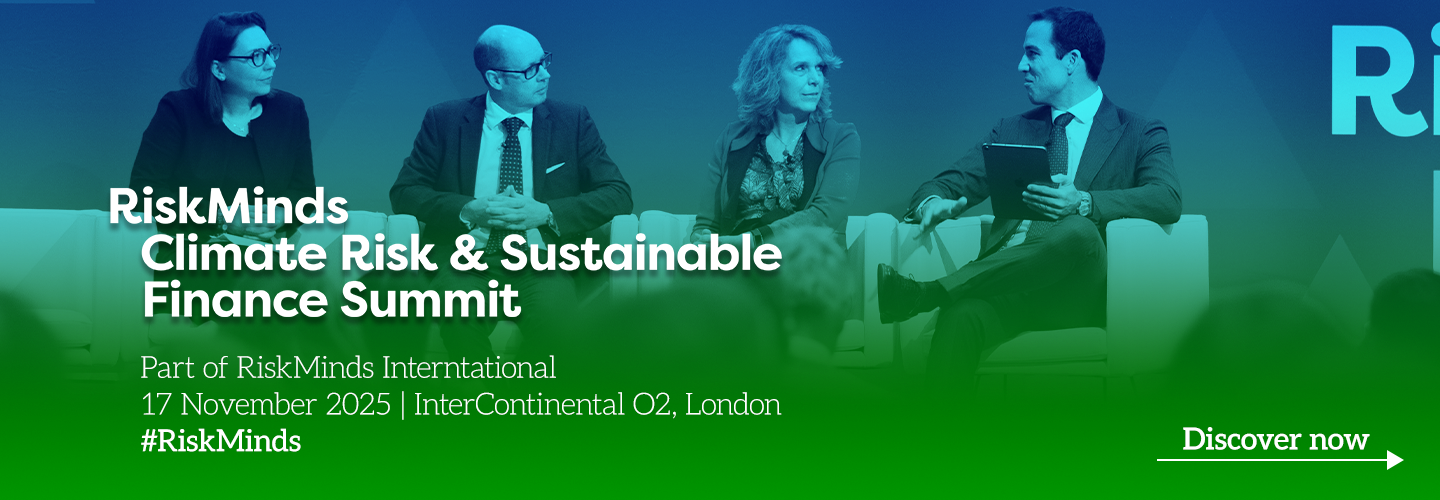The evolution of climate-related financial risk and integrating new thinking into risk management frameworks

In recent years, climate-related financial risk management has rapidly moved from the periphery to the mainstream of banking sector priorities. Initially, banks and regulators focused on understanding the longer-term implications of transition risk, those arising from policy, legal, technological, and market changes. However, the increasing frequency and severity of acute climate hazard events have brought physical risks, such as floods, typhoons, and heatwaves, into sharper focus, prompting a significant evolution in how banks approach climate risk management.
From transition to physical risk: A Shift in focus
The early days of climate-related financial risk management in banks were dominated by concerns over transition risk. Banks sought to understand how regulatory changes, carbon pricing, and shifts in consumer preferences might impact the creditworthiness of borrowers and the value of assets over the long term. Scenario analysis and stress testing were thus primarily geared towards assessing the impact of decarbonization pathways and the financial implications of Net Zero transitions. Banks typically based their assessments on NGFS climate scenarios, which previously focused only on long-term trends over several decades, rather than short-term impacts.
However, as the world has witnessed a surge in extreme weather events, the sector’s attention has shifted. Acute physical risks, such as the devastating floods in Southeast Asia and China1, prolonged droughts in South America2, and record-breaking heatwaves in Europe3, are now recognized as imminent threats to financial stability. The US’s withdrawal from Paris Agreement and weakening Net Zero commitments globally increase the likelihood that global emissions will persist on existing trajectories, pushing us ever closer to various climate tipping points4. These events can disrupt supply chains, damage physical assets, and impair the ability of borrowers to service their debts, with consequences that can materialize in the short term.
The evolution of climate-related financial risk management in the banking sector reflects a broader shift from viewing climate risk as an externality to embedding it at the heart of risk management and strategic decision-making.
Regulatory response: Mainstreaming acute physical risk stress testing
In response to these developments, financial regulators worldwide have progressively rolled out climate physical risk stress testing to evaluate the short-term impacts of acute physical risk events. Southeast Asian authorities such as the Monetary Authority of Singapore (MAS), Bank Negara Malaysia (BNM), Indonesia Financial Services Authority (OJK) and the Bank of Thailand (BOT) are working closely with banks to ensure that on top of long-term transition risks, short-term physical risks are systematically identified, assessed, and managed. These regulatory initiatives are driving banks to develop more sophisticated methodologies to quantify the impact of acute climate events on their portfolios, and to integrate these insights into their broader risk management frameworks.
Integration into the risk management framework: The latest development
Within ASEAN, flooding remains the most frequent and impactful natural disaster in the region, posing significant risks to urban centres due to a combination of climate change, rapid urbanisation, and aging or inadequate infrastructure. Research showed that 13 percent of ASEAN population are exposed and over USD 900 billion in capital stock is at risk of damage.5
Compared to the early stage of climate stress testing, methodologies have evolved significantly. Banks have moved from broad qualitative assessments to more sophisticated, quantitative approaches that allow for granular analysis at both individual geolocations, as well as overall company levels. These advancements enable banks to better understand the localised impacts of event-based climate hazards to enhance the banks’ risk assessments as well as portfolio management.
In the case of flood hazards, the use of high-resolution flood maps enables banks to estimate flood depths at individual building locations under various climate scenarios and time horizons. These physical parameters are then translated into potential asset damage and operational disruptions. The business impact from such climate disruptions can materially affect a borrower’s financial performance and creditworthiness. By incorporating these insights into stress testing frameworks, banks can more accurately gauge the resilience of their portfolios and identify areas of heightened vulnerability.
The same analytical framework can be extended to other prevalent climate hazards such as typhoons and heatwaves. This expansion supports a more holistic view of borrower and portfolio risks, enabling banks to build climate resilience across a broader spectrum of environmental threats. As climate risk management continues to mature, such capabilities will be essential to align with regulatory expectations and to safeguard financial stability in the face of escalating climate challenges.
Towards a future of greater resiliency: Collective impact through collaboration
Across the banking sector, institutions have actively collaborated with regulators, industry associates, academia, and consultants to advance climate risk management practices. In Singapore, the establishment of the Singapore Sustainable Finance Association (SSFA) in 2024 marked a significant milestone in the financial sector’s collective response to climate challenges. Many similar collaborations are observed around the world.
The evolution of climate-related financial risk management in the banking sector reflects a broader shift from viewing climate risk as an externality to embedding it at the heart of risk management and strategic decision-making. Banks should thus strive to strengthen their governance, policies, and internal capabilities as they continue to integrate climate risk into existing risk management frameworks. This integration not only supports institutional resilience but also underpins sustainable growth in a rapidly changing world.

